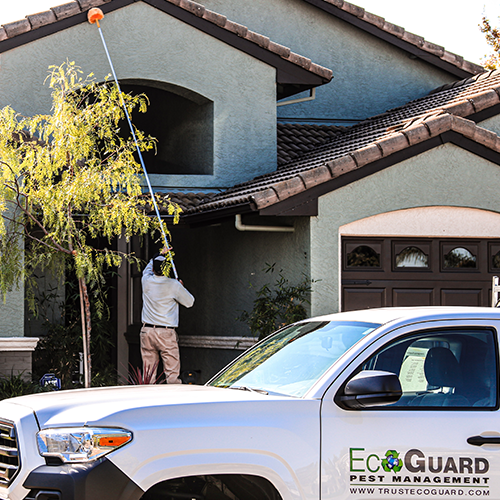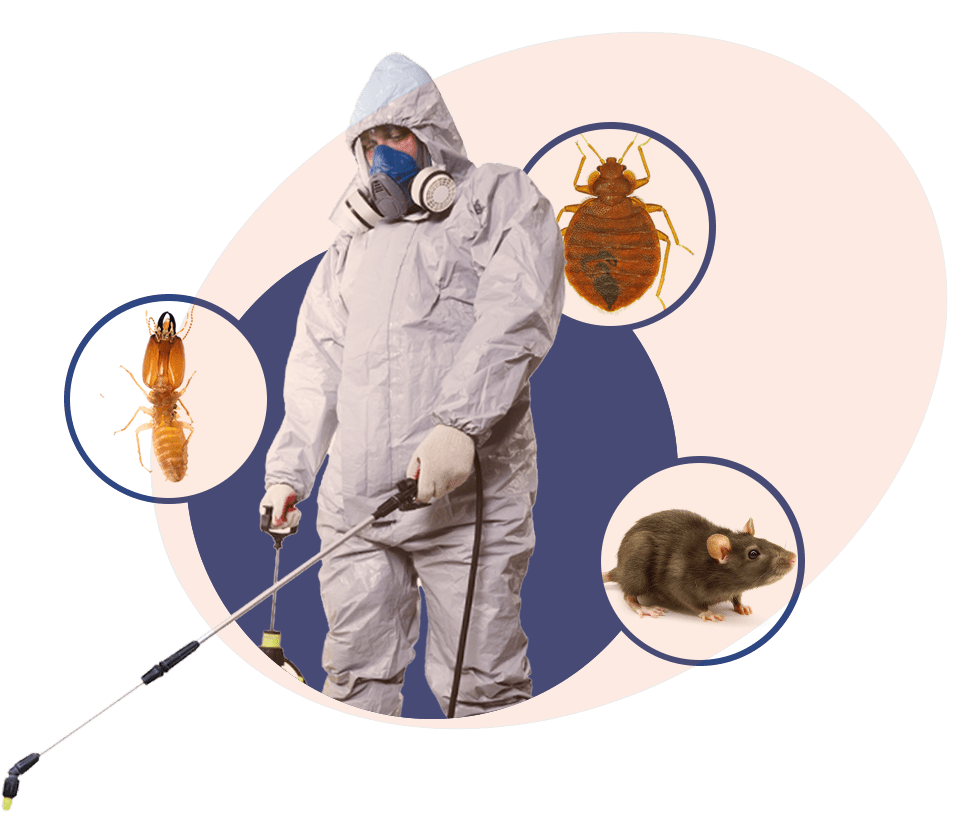Discover the Keys of Bug Control: Exactly How It Works and Process Exposed
Parasite control is a thorough technique that includes a deep understanding of insect behavior, strategic preparation, and exact implementation. From identifying the source of infestations to applying tailored control procedures, the procedure of pest control is a blend of scientific research and approach aimed at maintaining a harmonious atmosphere. Nonetheless, the ins and outs of this procedure frequently continue to be veiled, shrouded in enigma. Deciphering the nuances behind reliable pest control unveils a globe of systematic methods and very carefully calculated steps that are essential in combating and stopping pest-related concerns.
Insect Actions Recognizing
Recognizing the elaborate habits of bugs is important for efficient parasite control management. The habits of cockroaches, such as their preference for damp and dark environments, overviews pest control specialists in establishing where to focus therapy initiatives.
Moreover, comprehending exactly how bugs engage with their setting and reply to outside stimuli can enhance the performance of control approaches. Some bugs show signs of resistance to particular pesticides, requiring the use of alternative chemicals or methods. By remaining abreast of the most recent research on pest behavior, parasite control professionals can consistently improve their methods and remain ahead of developing pest populaces. Inevitably, a deep understanding of pest actions is a keystone of successful insect control management.

Examination and Identification Techniques
Reliable parasite control management depends heavily on meticulous examination and exact recognition techniques to accurately examine infestations and develop targeted elimination strategies. Assessment includes a complete exam of the residential or commercial property to figure out the degree of the insect issue, determine the kind of insect existing, and find prospective entrance points. This procedure may consist of aesthetically inspecting typical hiding spots, using monitoring devices such as traps or video cameras, and analyzing pest droppings or damage signs.
Identification is an important step that complies with evaluation, as different bugs require certain therapy approaches. Parasite control specialists utilize their experience and understanding of bug actions to determine the varieties existing accurately. This might involve analyzing physical characteristics, such as dimension, color, and markings, in addition to researching the pest's environments and habits. In many cases, samples might be accumulated for additional analysis in a research laboratory to validate the parasite species.
Bug Control Measures Implementation
Having carefully inspected and precisely determined the pests present, the following crucial step is the execution of targeted bug control steps to properly remove the infestation. Once the kind of insect has been determined, tailored techniques are employed to deal with the particular threat. Usual pest control approaches consist of chemical treatments, biological controls, and physical barriers. Chemical treatments entail making use of chemicals to remove pests, while biological controls introduce natural predators to manage bug More Help populaces. Physical barriers such as sealing entrance points or mounting catches are likewise reliable in avoiding bugs from getting in or spreading out within a residential property.
Correct execution of parasite control steps calls for expertise to make sure the security of residents and the setting. When using chemicals and to utilize suitable protective tools, it is critical to adhere to guidelines and regulations. Monitoring and follow-up assessments are necessary to evaluate the performance of the selected techniques and make any kind of required changes. By webpage employing targeted parasite control steps, infestations can be effectively gotten rid of, developing a much healthier and pest-free atmosphere.
Ecological Effect Factors To Consider
When implementing parasite control steps,Mindful assessment of the possible environmental influence is a crucial aspect. Insect control methods can have different results on the setting, including non-target varieties being influenced, contamination of soil and water sources, and disturbance of the community. It is necessary to think about these elements to reduce any type of unfavorable repercussions on the atmosphere.
To minimize environmental effects, integrated parasite monitoring (IPM) approaches are often recommended. IPM focuses on utilizing a mix of techniques such as biological control, environment control, and the targeted use of chemicals as a last resource. Pest Control Homestead. By employing an all natural method, IPM aims to regulate bugs properly while lessening harm to the environment

Recurring Surveillance and Avoidance
Constant monitoring and prevention play critical functions in keeping efficient parasite control methods with time. Once initial insect control procedures have actually been applied, recurring monitoring ends up being necessary to track parasite activity degrees and make certain that the picked methods are functioning effectively. Normal assessments by qualified professionals enable the early detection of any you could try these out type of signs of pest revival, allowing quick action to be taken prior to the problem escalates.
Preventative steps are similarly essential in maintaining a pest-free atmosphere. Implementing approaches such as sealing entrance points, preserving tidiness, proper waste administration, and lowering resources of food and water deny pests of the essentials they need to thrive. By proactively resolving these factors, the possibility of a parasite invasion is dramatically lowered.
In addition, precautionary steps contribute to the long-term success of pest control efforts, decreasing the demand for reactive therapies and linked costs. By integrating continuous tracking and avoidance right into a comprehensive insect management plan, businesses and individuals can effectively protect their properties versus undesirable trespassers.
Final Thought
Finally, parasite control includes understanding insect behavior, conducting detailed assessments, executing control measures, thinking about environmental influences, and maintaining recurring monitoring and avoidance. By adhering to these actions, insect problems can be properly handled and managed. It is vital to take a proactive approach to pest control to secure both human wellness and the environment.
By staying abreast of the most recent research on insect habits, pest control specialists can continuously improve their approaches and remain in advance of advancing insect populaces.Having actually carefully checked and accurately determined the pests present, the next important action is the execution of targeted parasite control actions to effectively eradicate the problem.Additionally, choosing environmentally pleasant insect control products and methods can dramatically decrease the environmental impact of parasite management techniques - Pest Control Homestead. When initial insect control steps have actually been executed, recurring tracking ends up being essential to track pest task degrees and ensure that the picked methods are functioning efficiently.In conclusion, pest control includes understanding insect behavior, carrying out comprehensive assessments, applying control steps, taking into consideration ecological impacts, and preserving continuous tracking and avoidance
Comments on “Specialist Pest Control Homestead Providers to Keep Pests at Bay”